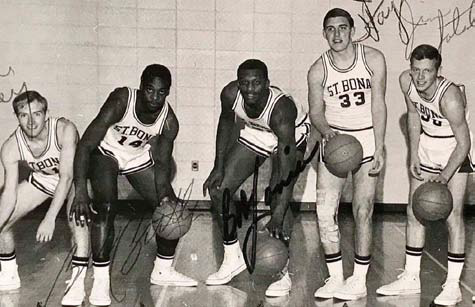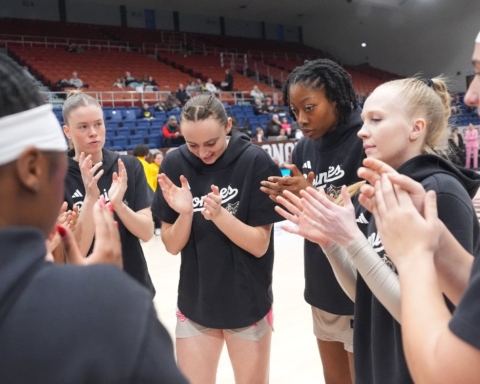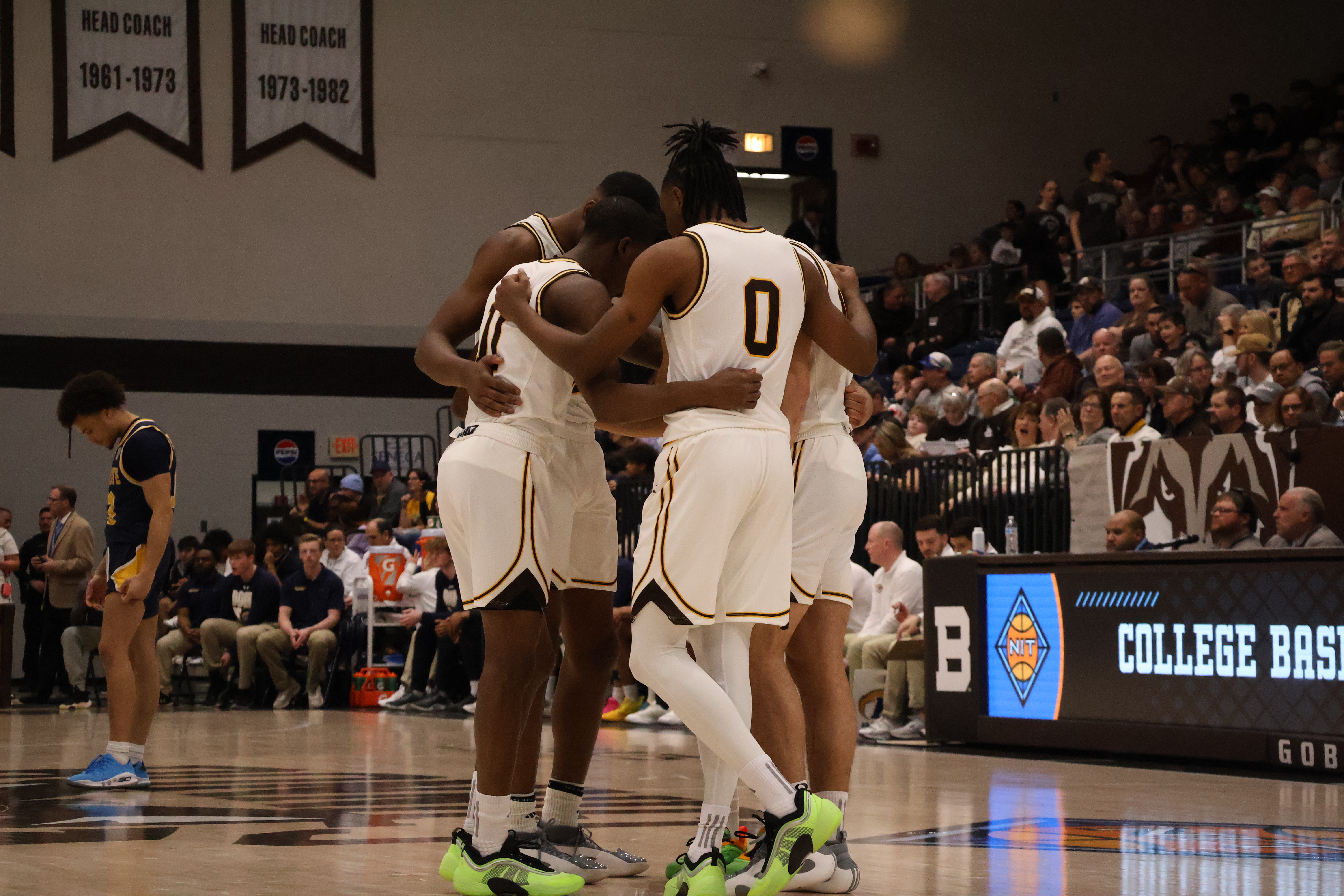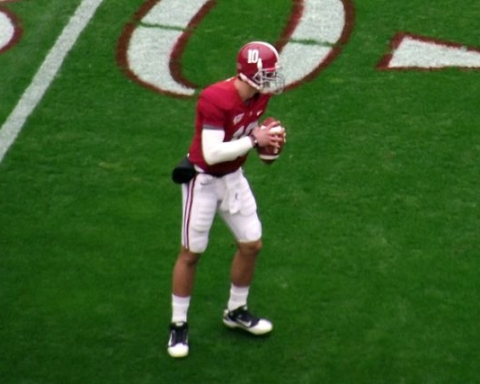By Joe Ceraulo, Contributing Writer
A half-century later, Bill Kalbaugh ’70 recalled the evening of April 4, 1968, when he and his roommate, Hall of Famer Bob Lanier ‘70, heard about the assassination of Martin Luther King Jr.
“I think we went down to shoot some pool in Olean, and that’s when we heard the news,” Kalbaugh said. “I can remember Bob being very devastated by it.”
The assassination occurred just weeks after an incredible season, one featuring great success on the court and adversity off it.
“It was devastating because things were just starting to turn around,” Kalbaugh said.
Just a few months earlier, on Dec. 18, 1967, most of St. Bonaventure’s students had gone home for Christmas break. The basketball team, however, was set to play Auburn in the first game of a four-team tournament in Tampa Bay, Florida.
“They were calling Lanier and Butler derogatory names on the court and the referees didn’t give a s—,” recalled John Hayes, the team’s starting small forward. “We were lucky to get out of that tournament and win those two games.”
The referees not only turned a blind eye to what Lanier and Butler had endured that day but attempted to assist Auburn’s effort to win.
“We must’ve been up 15, 20 points on Auburn,” Kalbaugh said. “Then all of a sudden, they fouled Lanier and Butler out of the game, and we couldn’t get a call. We walked out of there winning by four, but if we had played them anywhere outside of the South, we would have won by 25 points.”
Anyone fouling out for the Bonnies that year was rare as the team averaged just 15.1 fouls per game, the sixth fewest in the country. Both of its black players fouling out in the same game screamed foul on the officials’ part.
That tournament in Tampa Bay certainly served as a wake-up call for what this team was to expect ahead of its Sweet 16 game in Raleigh, North Carolina.
“When we went to Raleigh for the NCAA tournament, we stayed at this dump called the Hotel Raleigh,” said Jim Satalin, a guard on the team who later became the Bonnies coach, leading them to an NIT championship in 1977.
“Davidson, North Carolina and Columbia were all staying at some nice places, and we were the highest-ranked team there,” Satalin said. “The night before we played Carolina, I remember being in the room and guys were running up and down the hall screaming [racial slurs]. It was frightening.”
The next day, the Bonnies saw their undefeated season end at the hands of the Tar Heels.
Disappointing as it was to see the road end there, this team had accomplished and overcome so much throughout that historic, undefeated regular season.
Arguably its best win came over Bob Cousy’s Boston College team in the first round of the NCAA tournament, just days after Cousy guaranteed a win over the Brown and White.
Larry Weise, the coach of the ‘68 Bonnies and the winningest coach in St. Bonaventure history, knew he had something special brewing after the third game of the season.
“We went to Toledo in December, and they had beaten us in Olean the year before,” Weise said. “We won in overtime, and that changed everything. We just gelled.”
After the Toledo game, the Bonnies started rolling, with only two other teams taking them to overtime throughout the remainder of the year.
“From then on, we were just a scoring machine,” Weise said. “There wasn’t anybody that gave us much trouble.”
Hayes recalled what it was like when this team didn’t steamroll an opponent.
“In our last regular season game at Fairfield we beat them in overtime,” Hayes said. “The locker room was like a funeral parlor after the game. We usually kicked someone’s ass when we played them.”
Hayes was the team’s third-leading scorer that year, the only year in which he played a full season of varsity basketball at St. Bonaventure.
Just two years earlier, Hayes averaged nearly 35 points per game on the school’s freshman team, leading all freshmen in the country in scoring.
The man Hayes beat out for the freshman scoring title that season was UCLA sensation Lew Alcindor. The Hall of Famer is more commonly known by his current name which he adopted in 1971, Kareem Abdul-Jabbar.
“As a freshman nobody on the varsity team could stop him underneath the basket,” Weise said. “Even at 75, 80 percent, John was a really good player. If he hadn’t gotten hurt, he would have been right up there with Tom Stith and Lanier as Bonaventure’s best players.”
Hayes’s response when asked if he ever fully recovered from his injury was blunt.
“Never.”
Despite never playing on the varsity team at full health, Hayes was an instrumental part of a team that ended the year ranked third in the AP poll.
“It was such an awesome experience to be part of that undefeated regular season,” Hayes said. “I can’t imagine that it will ever be duplicated.”
While it hasn’t been duplicated, 50 years later this Bonnies team had an incredible run of its own, one that didn’t go unnoticed by the men who donned the Brown and White before them.
Satalin, who now provides color commentary on Syracuse basketball radio broadcasts, had a courtside seat to the Bonnies’ first ever win in the Carrier Dome last December.
“I was thrilled,” Satalin said. “People were asking me ‘Who are you rooting for tonight,’ and I said, ‘Listen, I played at St. Bonaventure, coached there, met my wife there, and my kids were born there. Of course, I’m rooting for St. Bonaventure!’”
Both he and Weise attributed much of the team’s success to current head coach, Mark Schmidt.
“I think Mark is one of the best coaches in the business today,” Weise said. “I like the way his kids play. They’re very unselfish and they play with a lot of spirit and intensity which is a credit to him.”
“If he isn’t the best coach in Bonaventure history, he’s certainly right there,” Satalin said.
The investment these men had in this team, 50 years later, is a true testament to what it means to be a Bonnie.
What makes this small school, of less than 2,000 undergraduate students, in western New York so special is that tight-knit bond between students, alumni and faculty that can’t be broken.
“We weren’t just a team but an extended family,” Lanier said. “Fifty years later, we truly care about each other.”






